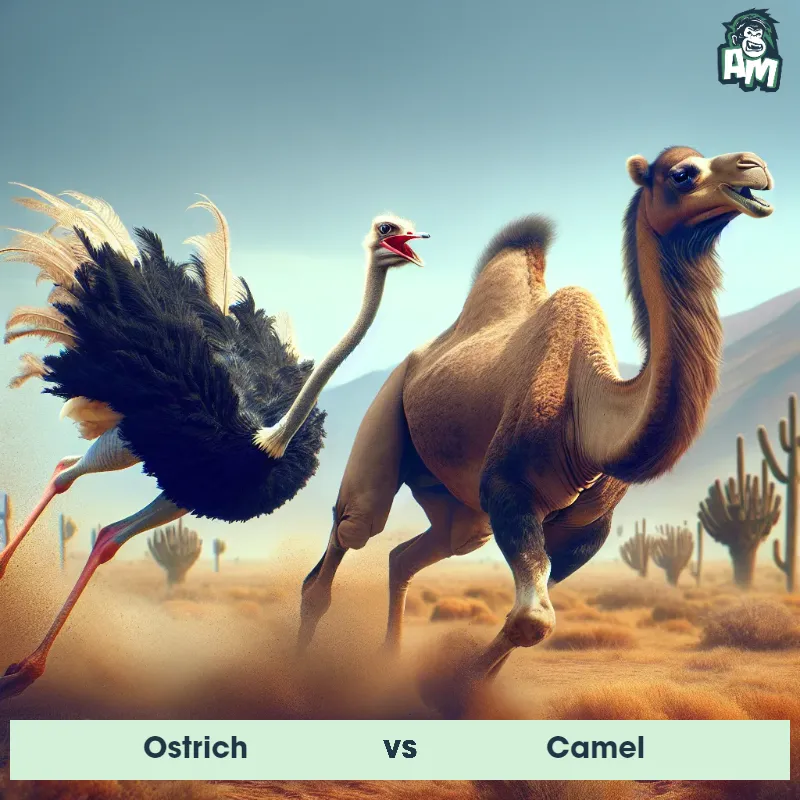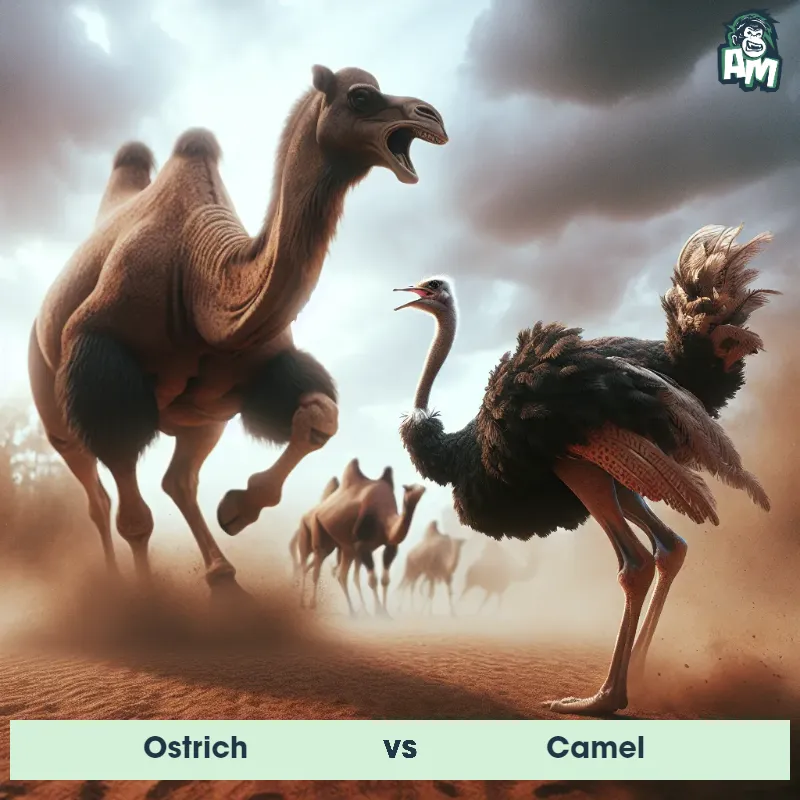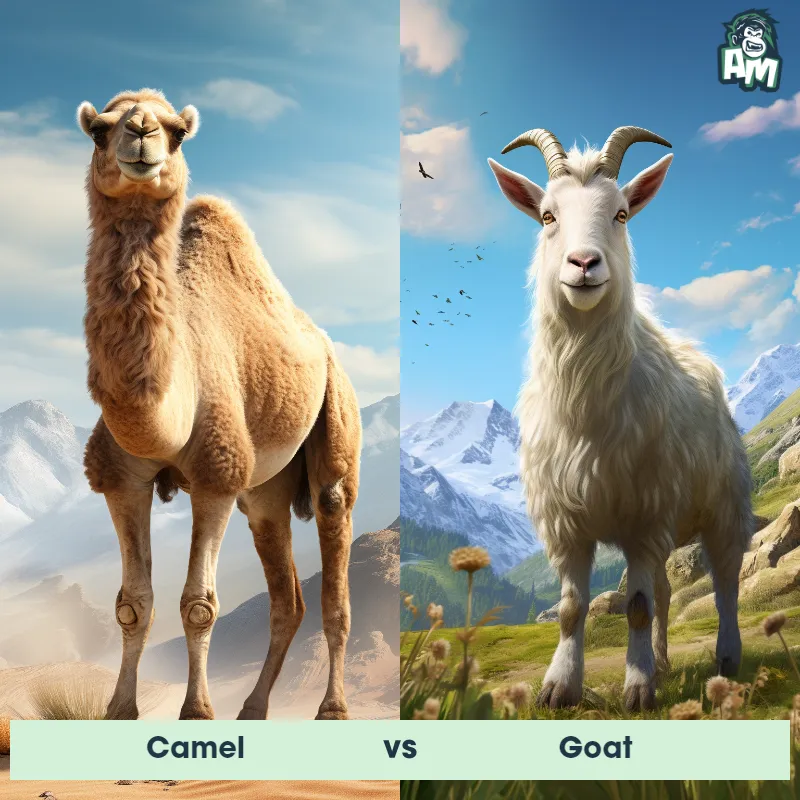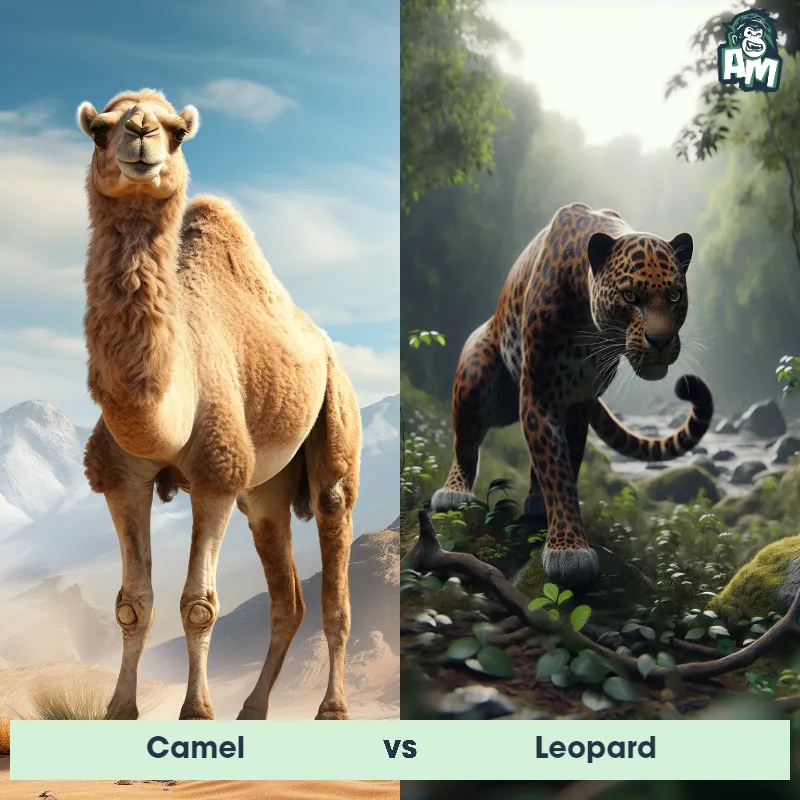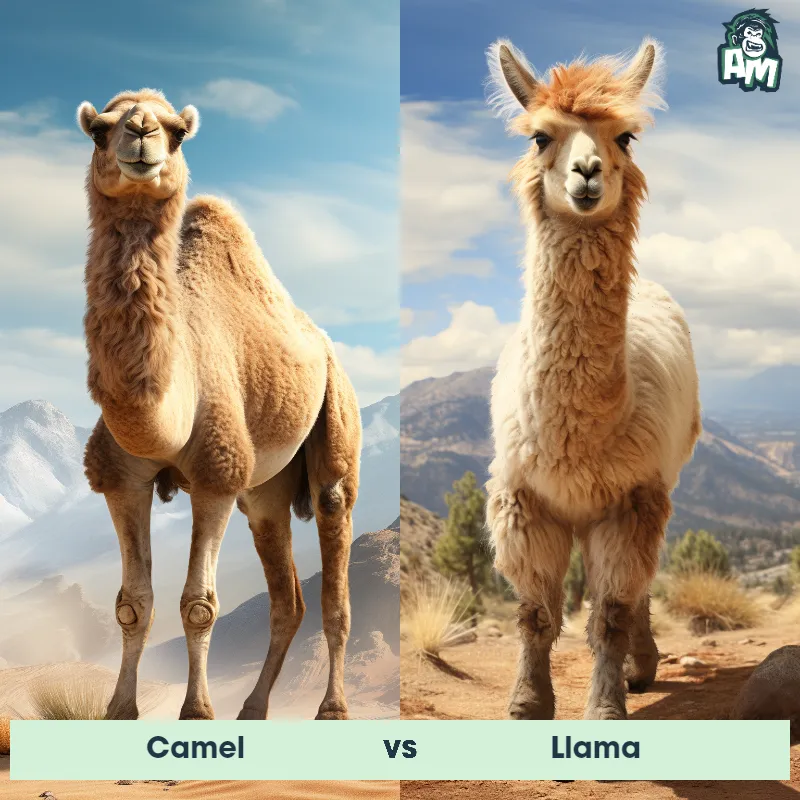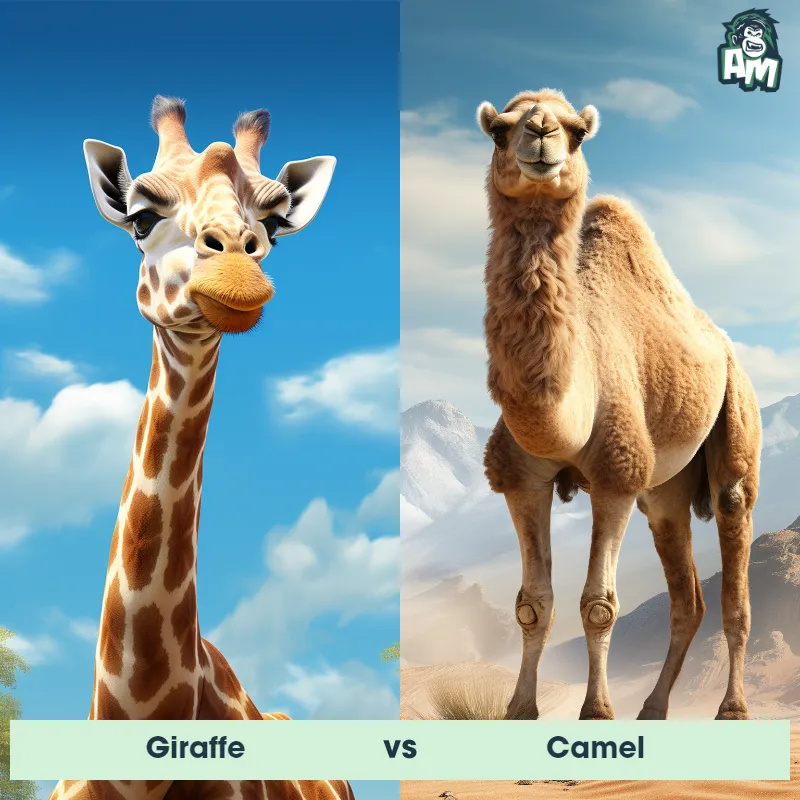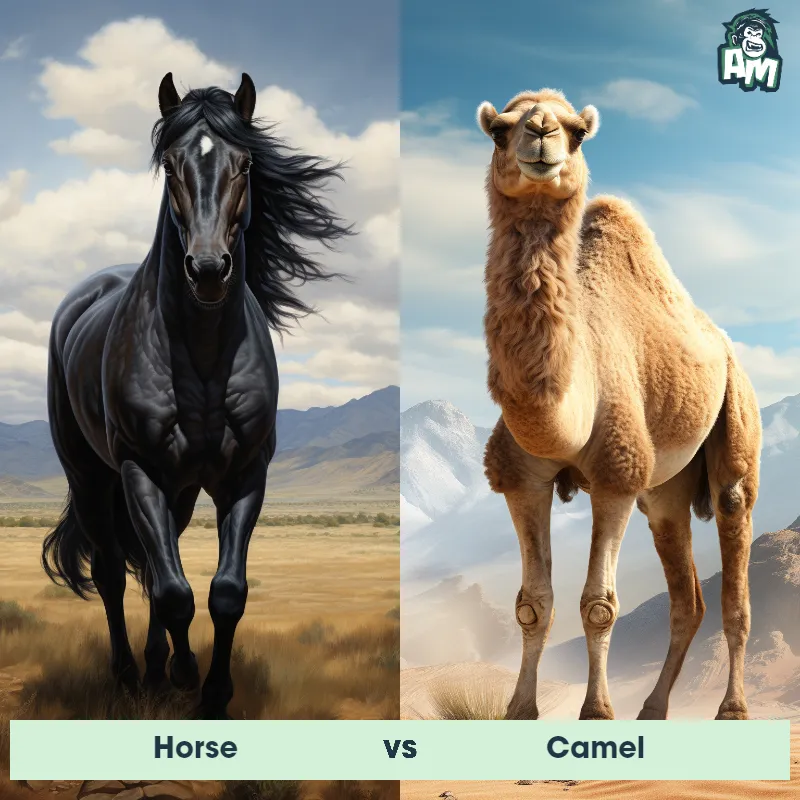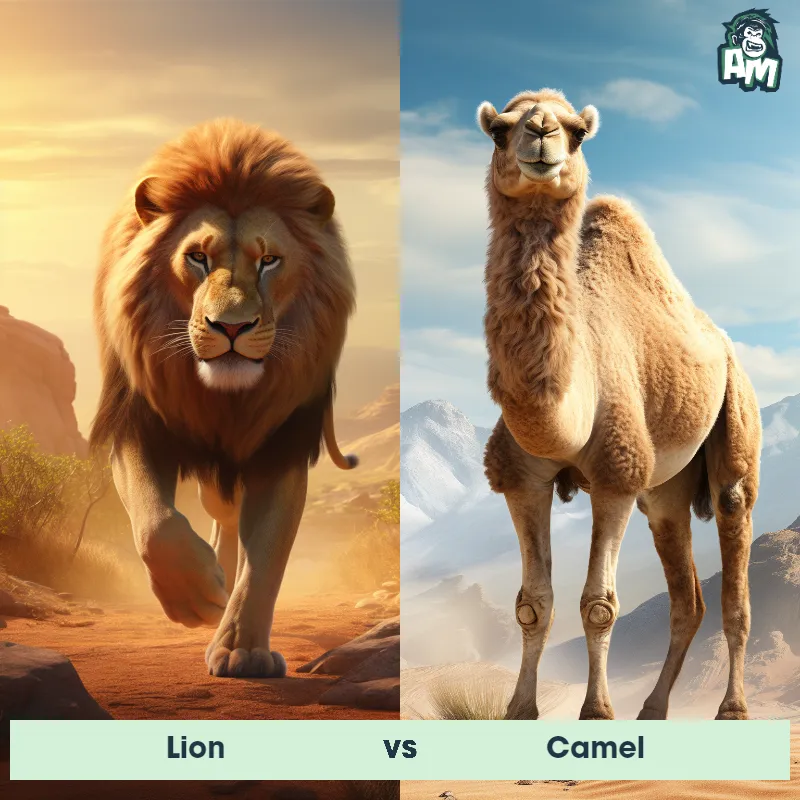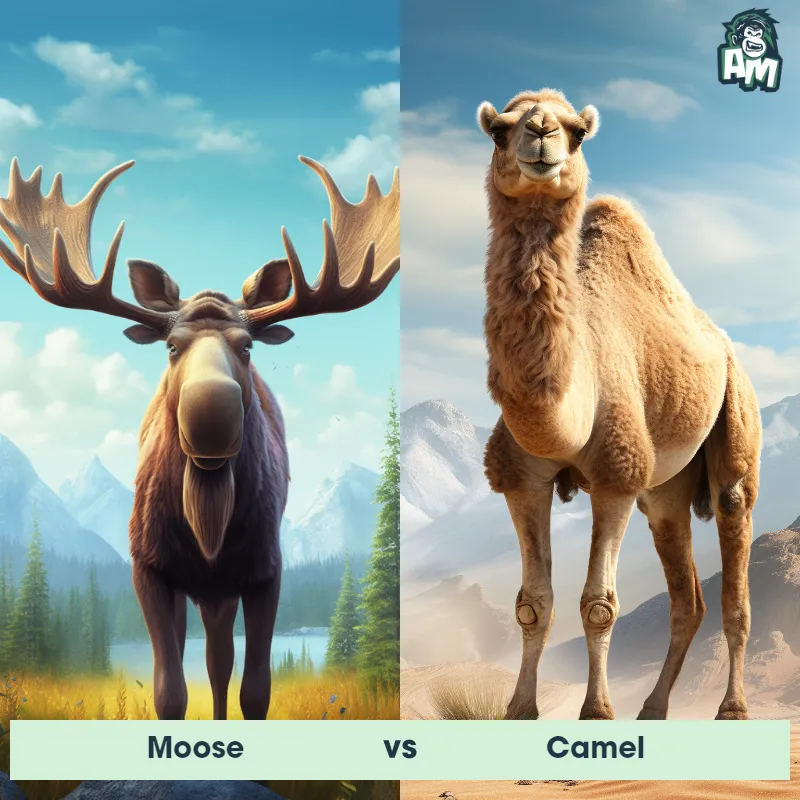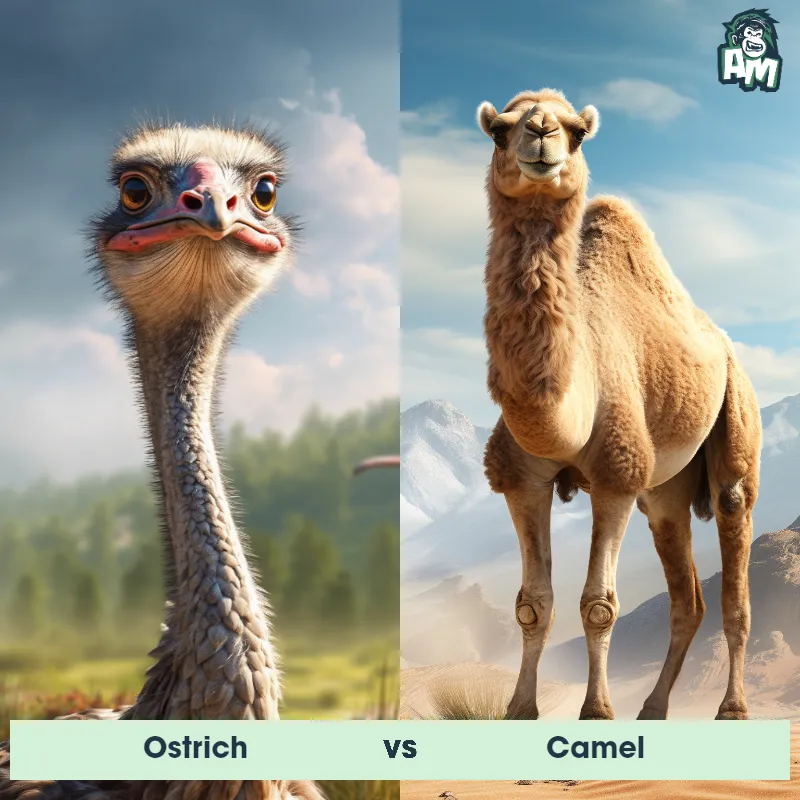The Camel
The camel, also known as a "ship of the desert," is a large, sturdy mammal with distinct adaptations for survival in harsh desert climates. With its humpback, long legs, and wide, padded feet, the camel is well-equipped for traversing sandy terrains. Its thick coat safeguards it from extremely high daytime temperatures and chilly nights. Camels possess the ability to store water in their humps, which provide hydration during arid conditions, sometimes allowing them to survive for weeks without drinking. They have long eyelashes and nostrils that can be closed to protect them against sand. With their social nature, camels often live in groups called herds, adding an extra layer of protection against predators.
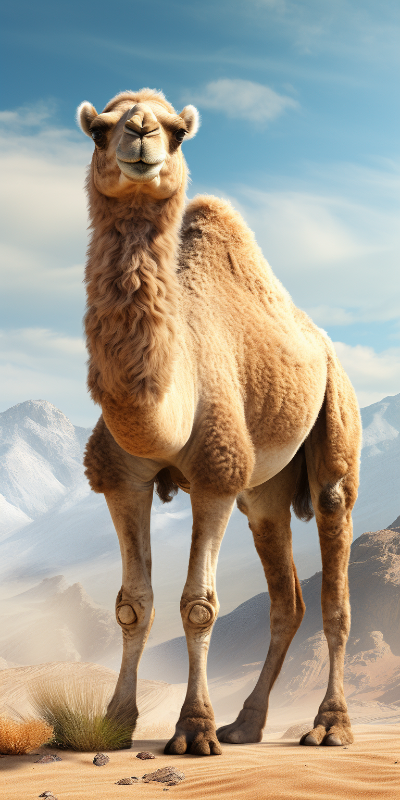
| Camel | |
|---|---|
| Size | 6 feet at shoulder height (1.8 meters) |
| Weight | 1000-1500 pounds (450-680 kilograms) |
| Speed | 40mph (64km/h) |
| Key Strength | Strong legs and heavy body weight |
| Biggest Weakness | Limited agility due to size and body structure |
| Scientific Name | Camelus |
| Family | Camelidae |
| Habitat | Deserts, arid regions |
| Geography | Middle East, North Africa, Central Asia |
| Diet | Herbivore, eats thorny plants, dry grasses, and saltbush |
| Lifespan | 40 years - 50 years |

The Camel
The camel, also known as a "ship of the desert," is a large, sturdy mammal with distinct adaptations for survival in harsh desert climates. With its humpback, long legs, and wide, padded feet, the camel is well-equipped for traversing sandy terrains. Its thick coat safeguards it from extremely high daytime temperatures and chilly nights. Camels possess the ability to store water in their humps, which provide hydration during arid conditions, sometimes allowing them to survive for weeks without drinking. They have long eyelashes and nostrils that can be closed to protect them against sand. With their social nature, camels often live in groups called herds, adding an extra layer of protection against predators.
Fun Fact: Camels have three eyelids to protect their eyes from sand and harsh desert winds.
| Camel | |
|---|---|
| Size | 6 feet at shoulder height (1.8 meters) |
| Weight | 1000-1500 pounds (450-680 kilograms) |
| Speed | 40mph (64km/h) |
| Key Strength | Strong legs and heavy body weight |
| Biggest Weakness | Limited agility due to size and body structure |
| Scientific Name | Camelus |
| Family | Camelidae |
| Habitat | Deserts, arid regions |
| Geography | Middle East, North Africa, Central Asia |
| Diet | Herbivore, eats thorny plants, dry grasses, and saltbush |
| Lifespan | 40 years - 50 years |
Match Highlights
Camel Matchups
We use AI to simulate matchups between the Camel and other animals. Our simulation considers size, strength, and natural predatory behaviors to determine the most likely outcome.
Camel: Diet, Predators, Aggression, and Defensive Behaviors
What do camels eat?
Camels are herbivores and primarily feed on grasses, grains, and vegetation found in their desert habitats. Camel can also consume thorny desert plants, saltbushes, and dried leaves. Camels are well-adapted to survive on minimal food and water for extended periods.
Do camels have any predators?
While camels are known for their ability to survive in harsh desert environments, Camel do have predators. In some areas, wild dogs, wolves, and mountain lions may prey on young or weak camels. However, adult camels are less vulnerable to predation due to their large size, strength, and ability to defend themselves.
Are camels aggressive?
Camels are generally docile animals, but Camel can become aggressive if Camel feel threatened or provoked. Male camels, known as bulls, may exhibit more aggressive behavior during the mating season when Camel compete for females. It's important to approach camels with caution and respect to avoid any potential aggression.
Do camels fight?
Camels are known to engage in fights, especially during the mating season when male camels compete for dominance and access to females. These fights can involve pushing, kicking, and biting as Camel establish hierarchy and territory. Female camels may also fight over resources like food or water in harsh desert environments.
How do camels defend themselves?
Camels have evolved some unique defense mechanisms to protect themselves from predators and threats. Camel may spit, kick, or bite if Camel feel threatened or provoked. Additionally, camels have powerful legs that can deliver strong kicks to fend off predators. Their thick, tough skin also provides a layer of protection against external threats.
What is the biggest weakness of camels in a fight?
Despite their size and strength, camels have a vulnerable spot that can be exploited in a fight: their long necks. Predators or rival camels may target a camel's neck in a fight to immobilize or overpower them. It's crucial for camels to use their agility and defensive tactics to protect themselves during aggressive encounters.
Fun Fact: Camels are capable of running at speeds of up to 40 miles per hour 65 kilometers per hour.
Fun Fact: Contrary to popular belief, the camel's hump is not filled with water but with fat, enabling it to sustain itself during long periods without food or water.



